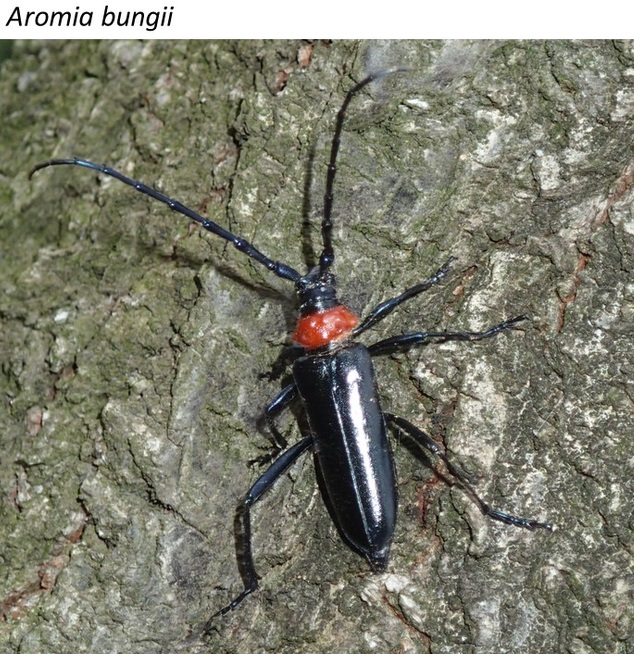Scientists from Tokyo Metropolitan University recently generated a simulation foretelling the spreading of an invasive beetle species that harm local flora. The researchers tested models based on river lengths, road lengths, and documented cherry tree numbers in square “cells” over Saitama Prefecture.

First spotted in Japan in 2012, this invasive beetle species causes serious harm to peach and cherry trees. Image Credit: Tokyo Metropolitan University.
They observed that a basic model based on river lengths provided results that compared positively with real-world data. Better predictions can aid authorities in channeling limited resources into the most required areas.
Invasive insect species pose a direct threat to local wildlife and the damages inflicted by them affect the local ecosystems and also the economies. Estimates reveal that the total annual cost of biological invasions worldwide is over 100 billion US dollars. The plum longhorn beetle or Aromia bungii, common in eastern Asia, is no exception.
However, it was first identified in Japan in 2012, and for the past decade, this species caused a devastating impact on cherry trees and peach orchards, especially the Somei Yoshino variety, which adorns the beautiful Japanese spring landscape. The invasion hit agriculture and intimidates the spring tourism industry to areas recognized for their ample cherry trees.
A major aspect of handling such pests is understanding where they spread every year. In spite of various technological innovations like special traps, only limited resources could be deployed, and also the local authorities should know the area of focus.
To help predict where the beetles will go, a group of researchers headed by Associate Professor Takeshi Osawa worked on computer simulations. They investigated Saitama Prefecture, a place where the beetles are a major problem in recent years.
The scientists employed cellular automata simulation that divides the landscape into squares, containing rules that dictate how likely the beetles spread from cell to cell in distinct directions. The researchers were aware of how much the beetles inclined to appear in areas with cherry trees.
Hence, they resolved to set the rules depending on three distinct variables—the total length of rivers, the number of cherry trees on record in each square, and the total length of roads, as both roads and rivers tend to have cherry trees along with them.
The scientists performed the simulations, observing for areas with increased levels of virtual invasions, and matched them with real-life observations of the beetles over the same area—compiled with the help of local citizens.
The model depending on the number of cherry trees proved to be the worst predictor for real invasions, as records extended to trees in public facilities alone. However, the combined model utilizing both roads and rivers proved to be the best, even though marginally better than the one made simply from river lengths.
The researchers initially started their detailed simulation of a smaller area and later spread the model over the whole of Saitama Prefecture. They observed, for instance, that virtual invasions were much predominant in the east compared to the west.
This matches the growing number of cherry trees in the more urban parts of eastern Saitama and also widely correlates with the troubling prevalence of beetles in neighboring Gunma Prefecture. The researchers anticipate that the precision of the simulations would help inspire focused surveillance and management strategies that selectively target areas with higher levels of virtual invasions, to obstruct real invasions from taking control.
Source:
Journal reference:
Osawa, T., et al. (2021) Establishment of an expansion-predicting model for invasive alien cerambycid beetle Aromia bungii based on a virtual ecology approach. Management of Biological Invasions. doi.org/10.3391/mbi.2022.13.1.02.